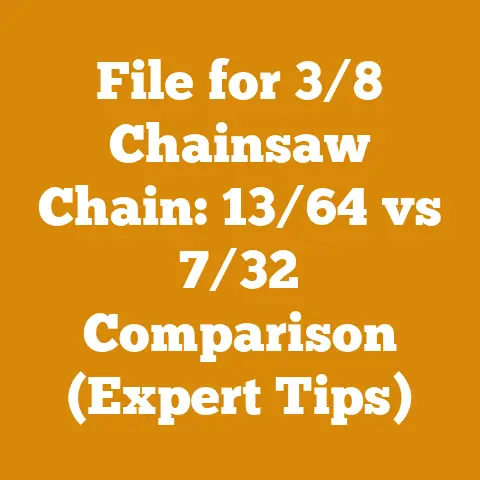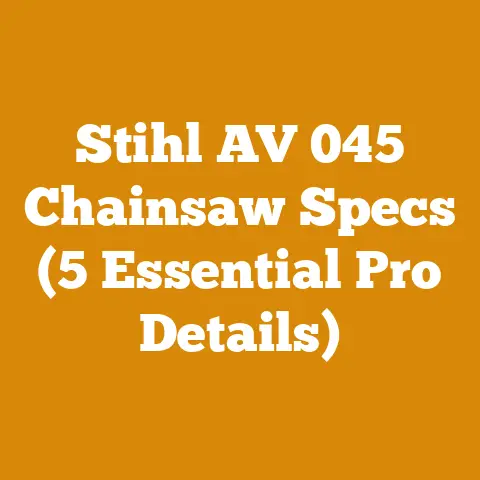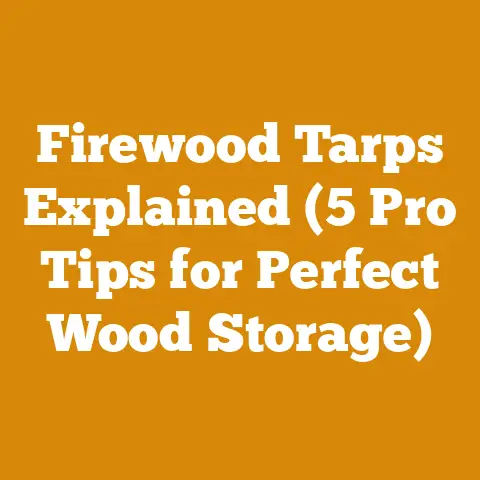Lifespan of Leyland Cypress in Wood Processing (5 Key Durability Factors)
Lifespan of Leyland Cypress in Wood Processing: 5 Key Durability Factors
The timber industry is constantly evolving, and one trend I’ve been closely observing is the increasing interest in fast-growing, readily available wood species for various applications. Leyland Cypress, with its rapid growth rate, has become a focal point for many looking for an alternative to traditional hardwoods. But here’s the crucial question: how durable is it, really, when put to the test in wood processing? In this article, I’ll delve into the lifespan of Leyland Cypress in wood processing, focusing on five key durability factors that will help you determine if it’s the right choice for your projects.
What is Leyland Cypress and Why the Buzz?
Leyland Cypress (x Cupressocyparis leylandii) is a hybrid evergreen conifer, a cross between Monterey Cypress and Alaskan Cedar. Its popularity stems from its exceptionally fast growth rate – often reaching 3-4 feet per year – making it attractive for quick-turnaround projects. It’s frequently used for privacy screens, windbreaks, and ornamental purposes. However, its applicability in wood processing, particularly concerning its lifespan and durability, requires careful consideration.
My Experience: I remember a project a few years back where a client was adamant about using Leyland Cypress for outdoor furniture frames due to its lower initial cost. While it seemed like a quick win initially, the long-term durability concerns kept me up at night. This experience highlighted the importance of thoroughly understanding the wood’s properties before committing to a project.
5 Key Durability Factors Influencing the Lifespan of Leyland Cypress
The longevity of Leyland Cypress in wood processing is significantly affected by several factors. These factors determine how well it withstands environmental stressors, decay, and general wear and tear.
1. Natural Decay Resistance
This is arguably the most critical factor. Leyland Cypress is classified as having low to very low natural decay resistance. This means it’s susceptible to fungal decay and insect infestation, particularly when exposed to moisture and direct ground contact.
Data Point: According to the USDA Forest Service, Leyland Cypress heartwood has a decay resistance rating of “slight or non-resistant.” This contrasts sharply with more durable species like cedar or redwood, which have significantly higher natural resistance.
Cost Implication: Lower decay resistance translates directly to higher maintenance costs. You’ll need to invest in treatments, sealants, and preservatives to extend its lifespan, potentially offsetting the initial cost savings.
My Insight: I’ve seen untreated Leyland Cypress fences succumb to rot in as little as 5 years in damp climates. Proper treatment with wood preservatives is absolutely essential. I personally recommend borate-based preservatives for their effectiveness and relatively low toxicity.
2. Moisture Content and Drying
The moisture content of wood plays a huge role in its stability and susceptibility to decay. Leyland Cypress dries relatively quickly, but it is prone to warping and checking (surface cracks) if not dried properly.
Technical Explanation: When green (freshly cut), wood can have a moisture content of well over 100% (based on dry weight). For most applications, wood needs to be dried to a moisture content of 6-12% to minimize movement and prevent fungal growth.
Data Point: Kiln-drying Leyland Cypress is crucial for achieving consistent moisture content. Air-drying alone can take months and is less reliable. Kiln-drying costs typically range from $0.20 to $0.50 per board foot, depending on the facility and volume.
Formula: You can estimate drying time using the following rule of thumb: Drying Time (days) ≈ Thickness (inches) x Drying Factor. The Drying Factor varies based on the species and drying method. For Leyland Cypress, a drying factor of 3-5 is reasonable for air-drying, while kiln-drying significantly reduces this time.
My Tip: If you’re air-drying, sticker your lumber properly (using thin strips of wood to separate each layer) and ensure good airflow to prevent uneven drying and warping. I always use a moisture meter to check the wood’s moisture content before using it in a project.
3. Strength and Density
Leyland Cypress is a relatively soft and lightweight wood. Its low density impacts its ability to withstand heavy loads and resist dents and scratches.
Data Point: The specific gravity of Leyland Cypress ranges from 0.35 to 0.45. This is considerably lower than hardwoods like oak (0.60-0.80) or maple (0.63). Lower specific gravity indicates lower density and, consequently, lower strength.
Cost Implication: If you’re using Leyland Cypress for structural applications, you’ll likely need to increase the dimensions of the lumber to compensate for its lower strength, which will increase material costs.
My Experience: I once used Leyland Cypress for a garden shed frame. To ensure structural integrity, I had to use larger dimension lumber than I would have with a hardwood, which added to the overall cost and made the structure heavier.
4. Treatment and Preservation
Given its low natural decay resistance, treatment is paramount for extending the lifespan of Leyland Cypress, especially in outdoor applications.
Treatment Options: * Pressure Treatment: This involves forcing preservatives deep into the wood under pressure. It provides excellent protection against rot and insects. The cost of pressure-treated Leyland Cypress is typically $0.50 to $1.00 per board foot higher than untreated lumber. * Surface Treatments: These include paints, stains, sealants, and wood preservatives applied to the surface of the wood. They offer some protection but need to be reapplied regularly. The cost varies depending on the product, but expect to spend $20-$50 per gallon for a good quality exterior-grade finish. * Borate Treatments: Borate-based preservatives are effective against insects and fungi and are relatively non-toxic to humans and pets. They are often used as a pre-treatment before painting or staining.
My Recommendation: For outdoor projects, I always recommend pressure-treated Leyland Cypress whenever possible. It provides the best long-term protection and peace of mind. If pressure treatment isn’t an option, use a high-quality wood preservative and reapply it every 1-2 years.
Case Study: A local park used untreated Leyland Cypress for picnic tables. Within three years, the tables showed signs of significant decay. They were subsequently replaced with pressure-treated lumber, which is expected to last at least 15 years.
5. Environmental Conditions
The environment in which the Leyland Cypress is used significantly impacts its lifespan. Exposure to moisture, sunlight, and extreme temperatures accelerates its degradation.
Regional Variation: In humid climates with high rainfall, Leyland Cypress is more susceptible to rot and decay. In arid climates, it may dry out and crack more easily.
Cost Implication: In harsh environments, you’ll need to invest more in maintenance and repairs, potentially shortening the lifespan of the wood and increasing long-term costs.
My Observation: I’ve noticed that Leyland Cypress used in shaded areas tends to last longer than that exposed to direct sunlight, as the shade reduces moisture evaporation and temperature fluctuations.
Budgeting for Leyland Cypress Projects: A Cost Breakdown
Now that we’ve examined the key durability factors, let’s break down the costs associated with using Leyland Cypress in wood processing.
1. Timber Purchase or Harvesting Costs
The cost of Leyland Cypress lumber varies depending on your location, the grade of the wood, and the supplier.
- Lumber Purchase: Expect to pay $2 to $4 per board foot for untreated Leyland Cypress lumber at a local lumberyard. Prices may be lower if you buy directly from a sawmill.
- Harvesting Costs: If you’re harvesting your own Leyland Cypress trees, you’ll need to factor in the cost of felling, limbing, bucking, and transporting the logs. This can include:
- Chainsaw Rental: $50 – $100 per day
- Fuel and Oil: $20 – $50 per day
- Labor (if hiring): $20 – $50 per hour
- Transportation (truck rental or fuel): Varies depending on distance
- Permits (if required): Varies depending on location
My Experience: I once harvested Leyland Cypress from my own property. While it saved me money on lumber, the labor involved was significant. I spent an entire weekend felling, limbing, and bucking the trees.
Data Point: The average cost of hiring a professional tree service to fell a Leyland Cypress tree ranges from $100 to $500, depending on the size and location of the tree.
2. Tool and Equipment Costs
The tools and equipment you need will depend on the scale of your project and the processing methods you use.
- Chainsaw: A good quality chainsaw is essential for felling and bucking logs. Prices range from $200 for a basic model to $1000 or more for a professional-grade saw.
- Sawmill (Optional): If you’re processing a large volume of lumber, a portable sawmill can be a worthwhile investment. Prices range from $3,000 to $20,000 or more.
- Moisture Meter: A moisture meter is crucial for monitoring the moisture content of the wood during drying. Prices range from $20 to $200.
- Safety Gear: Safety glasses, ear protection, gloves, and a hard hat are essential for safe wood processing. Expect to spend $50 – $100 on safety gear.
Cost Comparison Table:
| Tool/Equipment | Price Range | Notes |
|---|---|---|
| Chainsaw | $200 – $1000+ | Choose a saw appropriate for the size of the trees you’re felling. |
| Portable Sawmill | $3,000 – $20,000+ | Consider renting if you only need it for a short time. |
| Moisture Meter | $20 – $200 | A pin-type meter is more accurate than a pinless meter. |
| Safety Gear | $50 – $100 | Don’t skimp on safety! |
3. Labor Costs
If you’re hiring help, labor costs can be a significant expense.
- Logging Crew: The cost of hiring a logging crew varies depending on the size of the crew and the complexity of the job. Expect to pay $500 to $2000 per day.
- Woodworkers/Carpenters: The cost of hiring woodworkers or carpenters to process the lumber and build your project varies depending on their experience and location. Expect to pay $30 to $100 per hour.
My Tip: If you’re on a tight budget, consider doing as much of the work yourself as possible. However, be realistic about your skills and time constraints.
4. Treatment and Finishing Costs
As discussed earlier, treatment and finishing are crucial for extending the lifespan of Leyland Cypress.
- Pressure Treatment: As mentioned, the cost of pressure-treated Leyland Cypress is typically $0.50 to $1.00 per board foot higher than untreated lumber.
- Wood Preservatives: A gallon of high-quality wood preservative costs $20-$50 and can cover approximately 200-400 square feet.
- Paint/Stain: The cost of paint or stain varies depending on the quality and type. Expect to spend $30-$60 per gallon.
Calculation: To estimate the cost of finishing, calculate the surface area of the wood you need to treat and divide by the coverage rate of the product.
5. Permits and Fees
Depending on your location and the scale of your project, you may need to obtain permits for harvesting trees or building structures.
- Harvesting Permits: These permits regulate the harvesting of timber and ensure sustainable forestry practices. The cost varies depending on the location and the volume of timber being harvested.
- Building Permits: These permits are required for constructing structures such as sheds, fences, and decks. The cost varies depending on the size and complexity of the structure.
My Advice: Always check with your local authorities to determine what permits are required for your project. Failing to obtain the necessary permits can result in fines and delays.
Cost Optimization and Budget Management Tips
Here are some practical tips for optimizing costs and managing your budget when working with Leyland Cypress:
- Shop Around: Get quotes from multiple lumber suppliers and compare prices.
- Buy in Bulk: Buying lumber in bulk can often save you money.
- Consider Second-Hand Lumber: Reclaimed lumber can be a cost-effective option, but be sure to inspect it carefully for rot and insect damage.
- Do it Yourself: Do as much of the work yourself as possible to save on labor costs.
- Plan Carefully: A well-planned project is less likely to run into unexpected expenses.
- Use a Detailed Budget: Create a detailed budget that includes all anticipated costs.
- Track Your Expenses: Track your expenses carefully and compare them to your budget.
- Be Flexible: Be prepared to make adjustments to your budget as needed.
- Prioritize Treatment: Don’t skimp on treatment and finishing. It’s a worthwhile investment that will extend the lifespan of your project.
- Consider Alternatives: If Leyland Cypress is too expensive or unsuitable for your project, consider alternative wood species.
Industry Benchmarks and Statistical Data
To provide a clearer picture of the costs involved, here are some industry benchmarks and statistical data:
- Average Price per Cord of Firewood (Leyland Cypress): $150 – $300 (varies by location and demand)
- Average Cost of Logging per Acre: $500 – $2000 (depends on terrain and timber volume)
- Average Rental Fee for a Portable Sawmill: $200 – $500 per day
Source: These figures are based on industry surveys and market reports from organizations such as the USDA Forest Service and forestry trade associations.
Calculating Volume of Logs
Understanding how to calculate the volume of logs is essential for estimating timber yields and costs.
- Board Feet: A board foot is a unit of measurement for lumber equal to 1 inch thick, 12 inches wide, and 12 inches long.
- Cords: A cord is a unit of measurement for firewood equal to a stack of wood 4 feet high, 4 feet wide, and 8 feet long.
Formula for Estimating Board Feet in a Log (Doyle Log Scale):
Board Feet = (Small End Diameter (inches) – 4)² x Length (feet) / 16
Example: A log with a small end diameter of 12 inches and a length of 10 feet would contain approximately (12-4)² x 10 / 16 = 40 board feet.
My Advice: This is just an estimate. The actual yield will vary depending on the quality of the log and the sawing method used.
Actionable Takeaways and Next Steps
So, where does this leave us? Leyland Cypress can be a viable option for certain wood processing projects, but its low natural decay resistance necessitates careful planning and diligent treatment.
- Assess Your Needs: Determine whether Leyland Cypress is the right wood species for your project based on its strength, durability, and aesthetic qualities.
- Create a Detailed Budget: Factor in all costs, including timber purchase, tool rental, labor, treatment, and permits.
- Prioritize Treatment: Invest in high-quality wood preservatives or pressure-treated lumber to extend the lifespan of your project.
- Monitor Moisture Content: Use a moisture meter to ensure that the wood is properly dried before use.
- Seek Professional Advice: Consult with a local lumber supplier or woodworker for advice on selecting and working with Leyland Cypress.
Challenges Faced by Small-Scale Loggers and Firewood Suppliers
Small-scale loggers and firewood suppliers often face unique challenges when working with species like Leyland Cypress:
- Limited Access to Markets: They may have difficulty competing with larger suppliers who can offer lower prices due to economies of scale.
- High Transportation Costs: Transporting logs and firewood can be expensive, especially for those who live in remote areas.
- Equipment Costs: Investing in equipment such as chainsaws, splitters, and trucks can be a significant financial burden.
- Regulatory Compliance: Complying with forestry regulations and obtaining the necessary permits can be time-consuming and expensive.
My Suggestion: Forming cooperatives or collaborating with other small-scale operators can help to overcome these challenges by pooling resources and sharing costs.
Final Thoughts: Is Leyland Cypress Right for You?
The decision to use Leyland Cypress in wood processing ultimately depends on your specific needs and priorities. While it offers certain advantages, such as its fast growth rate and relatively low cost, its low natural decay resistance must be carefully considered. By understanding the key durability factors and implementing proper treatment and maintenance practices, you can maximize the lifespan of Leyland Cypress and create beautiful and functional wood products. Remember, a little planning goes a long way in ensuring the longevity and success of your project.






